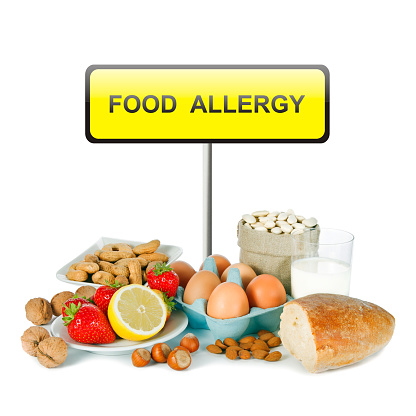
Understanding Food Allergies
By Jennifer Anderson, RD, LD, CDE
Food allergies are a health problem with increasing prevalence over the last three decades. According to the National Institute of Allergy and Infectious Disease, food allergies affect approximately 5 percent of children and 4 percent of adults in the United States.
A food allergy is defined as an adverse health effect arising from a specific immune response that occurs reproducibly on exposure to a given food. Food allergies are different from food intolerance, which is anon-immune adverse reaction to a food.
While almost any food can cause an adverse reaction, eight foods account for 90 percent of food allergies: hen eggs, cow’s milk, peanuts, tree nuts, fish, shellfish, wheat and soy. Some food allergies, such as egg, dairy, soy and wheat, tend to fade after a few years of food avoidance. Allergies to peanut, tree nuts, fish and shellfish tend to be lifelong.
Your risk for food allergies is higher if you have a family history of food allergies, particularly in your parents and siblings. People with asthma or atopic dermatitis are also at higher risk for developing a food allergy.
Allergy symptoms range from minor to life threatening and can affect many areas of the body. Symptoms may include, but are not limited to, reddened or itchy skin, chest tightness, wheezing, swollen tongue, nausea or vomiting.
But if you have one of these symptoms after eating something, don’t assume you have a food allergy or eliminate a food without a proper evaluation by a health care professional. Many times, reactions to food aren’t caused by allergies.
Food allergies are considered if a person presents with anaphylaxis, a rapidly progressing, severe and life-threatening allergic reaction; experiences symptoms within minutes to hours of ingesting food, especially young children; or repeatedly experiences symptoms after eating a particular food.
Your doctor can test you for food allergies. The most common tests to diagnose food allergies are the skin prick test (SPT) and allergen-specific IgE (sIgE) testing. Skin prick tests are used most often. These tests are inexpensive and results are available immediately. The sIgE test detects the presence of sIgE antibodies. A diagnosis isn’t determined by testing results alone; the results are considered in correlation with your medical history. Elimination diets and oral food challenges can also help your doctor diagnose an allergy.
Dietary restrictions and avoiding specific allergenic foods are the primary ways to manage food allergies. If you have a food allergy, learn how to interpret the ingredients listed on food packaging and how to recognize food allergen labeling. Medications, such as antihistamines, are used to manage symptoms, and epinephrine is the first-line treatment in anaphylaxis. No medications are recommended to prevent food allergies.
The National Institute of Allergy and Asthma does not recommend restricting your child’s diet to prevent food allergies or delaying the introduction of solid or potentially allergenic foods. Based on recent research on peanut allergies, it’s recommended that peanut-containing products be introduced early in life to infants with a higher risk of peanut allergies. Delayed introduction of peanuts is actually associated with increased risk of peanut allergy.
Living with food allergies can present challenges, but there are many resources and health care professionals who can help you. Over the last few years the number of allergen-free foods available has grown significantly, offering more variety and options.